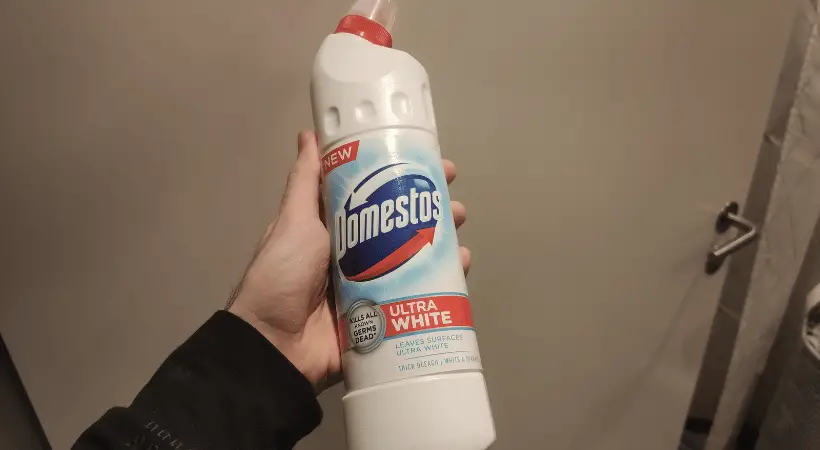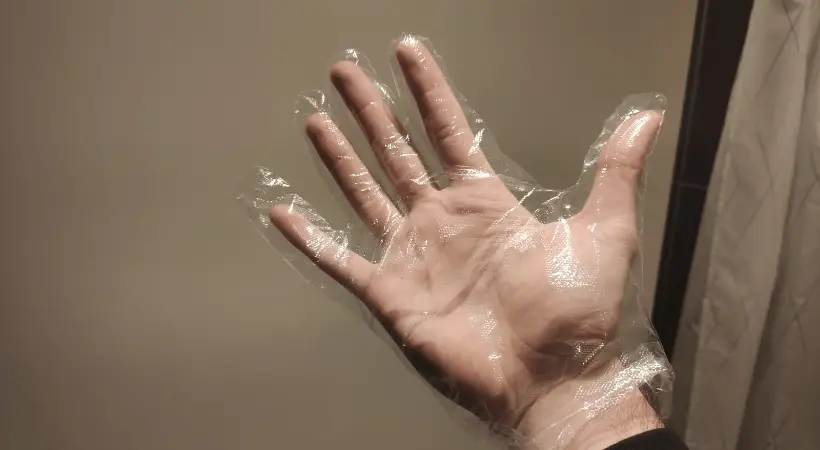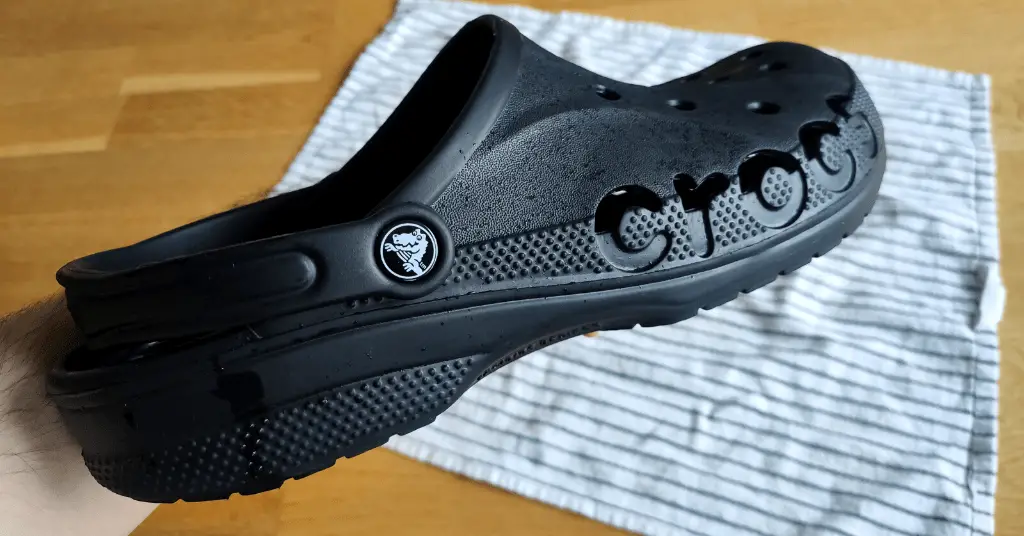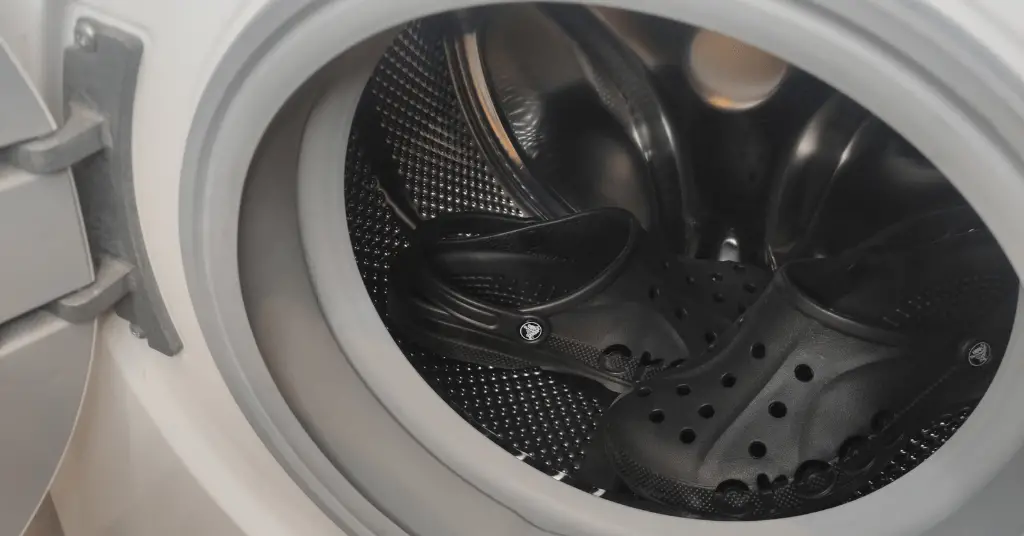Crocs are indeed bleachable. However, there are several types of bleaches. Some bleaches have a reputation for being harsh, while others work wonders when used to clean Crocs. Additionally, Crocs are available in a variety of materials. Classic white Crocs become squeaky when bleached while leather and suede are better off not being bleached.
So, before you decide to bleach your Crocs, give this article a quick read.
Should you use bleach to clean Crocs?
While bleach is frequently preferred for various purposes, it has some fairly unpleasant side effects too. We’ve outlined some pros and cons of using bleach to help you decide if it is something you should try.
Pros
- Commonly used as an all-purpose cleaning solvent.
- Works as an effective disinfectant that helps eliminate germs and bacteria.
- Affordable and reasonably priced.
- Readily available at all supermarkets and stores.
- Easy and quick to use.
Cons
- Corrosive and harmful to most Crocs.
- Large amounts of bleach can discolor and cause the Croslite material to fade.
- Bleach loses its strength and efficiency with time.
- Contact with bleach can irritate the hands, eyes, and skin.
- People having asthma or other respiratory issues are especially vulnerable to bleach.
Can bleach be harmful to Crocs?

Since Crocs are composed of sensitive materials such as Croslite and leather, you may believe using bleach on Crocs would be a disaster. It, however, is untrue. Bleaches come in various types, including chlorine, hydrogen peroxide, and oxygen bleach. While most of these can be harmful, bleaches that have oxalic acid can benefit your Crocs.
To create a powerful Crocs cleaning fluid, we advise combining one part bleach with four parts water. But remember to fill the bleach bottle’s cap to the brim to prevent making the solution too strong.
It is essential to mention that bleach sometimes leaves behind yellow stains if you use it for an excessive amount of time or if you don’t dilute it correctly. Hence, cleaning and rinsing your Crocs using a washing machine will often be safer.
How does bleach affect various types of Crocs?
Bleaching is not an option for routine cleaning. But you can occasionally use it to remove tough stains that other Crocs cleaning methods have failed to solve. We advise you to first test bleaching on an old pair or an unnoticeable part of your Crocs to ensure you won’t end up ruining your favorite Crocs.
Crocs are made of several materials, and each responds differently to bleach. While white and fuzzy Crocs can be bleached, leather Crocs are best cleaned using other methods.
In this section, we’ve broken down the most common types of Crocs and how each one reacts to bleach.
Regular Crocs
Regular Crocs that are made of Croslite should not be bleached. We wouldn’t suggest it because if your Crocs aren’t white, an ordinary bleach will end up discoloring them. You can try other methods like hand washing Crocs with soapy water to keep your Crocs clean.
However, bleach soak is a perfect option if your Crocs are white.
Regular white Crocs
Bleaching works best for deep cleaning regular white Crocs. So, if your white Crocs are dirty, you don’t have to throw them away or wear them with ugly stains. Bleach can make your stained Crocs sparkling white.
To get the best results, only bleach white Crocs that have been previously rinsed with soapy water.
How to bleach white Crocs?
Bleaching white Crocs is no rocket science. It is pretty straightforward. All you need is a good quality bleach, and a quick read through our detailed step-by-step bleaching guide.
Step 1:
Fill up a bucket or washing tub halfway with lukewarm water. Add in mild bleach but remember to keep a 1:4 bleach to water ratio.
Step 2:
Mix your solution carefully to dilute the bleach properly.
Step 3:
Immerse your Crocs in the liquid and soak them for at least 30 minutes to an hour.
Step 4:
Once you’re done soaking, carefully take them out.
Step 5:
Rinse Crocs under cold water. Use a toothbrush to scrub any leftover stains. Leave them to air dry.
Leather Crocs
We advise not to use strong bleaches or ammonia-based chemicals for your leather Crocs. These chemicals are overly abrasive and harm the smooth leather surface. Even too much water might leave behind rigid stains on your leather Crocs.
Using the wrong type of bleach can make your leather Crocs discolored, leaving you with no choice but to get a new pair. Also, bleach may cause the leather to become completely unusable and ill-fitted.
You can try oxalic acid if you’ve tried everything else and still have blotchy patches on your leather Crocs. This exceptional bleach-like fluid is intended to lighten leather and wood. In contrast to chlorine bleach, which is sure to destroy your Crocs, oxalic acid can help you get the desired results.
Fuzzy Crocs
True to its name, fuzzy Crocs provide comfort and keep the frost off your feet. However, bleaching them is no less than a headache. Bleach can harm and discolor your fur. In some instances, even professional dry cleaners are needed to protect the Crocs with fur from eroding when bleached.
But with our step-by-step approach keeping your white fuzzy Crocs clean is a piece of cake. Since faux fur is a common feature of white Crocs, cleaning with bleach is simple and convenient. It also becomes easier to clean if the insole lining is detachable.
How to bleach white fur Crocs?
With the correct bleaching technique, we believe you can make your fuzzy-lined white fur Crocs look brand new. The steps are similar to what we’ve discussed before, but if you missed them, here is a brief description.
Step 1:
Take the lining off your white Crocs. To do this, invert the lining while holding the shoe. Then, loosen the fasteners with your thumb to let the liner slip out.
Step 2:
Soak the liners and Crocs in soapy water. Add up to two caps of bleach, depending on the stains. Let them submerge for 30 minutes so the bleach can remove any dirty patches.
Step 3:
Gently scrub off your Crocs and rinse them with tap water to remove the bleaching agents.
Step 4:
Leave the liner and Crocs to air dry.
Step 5:
Once it’s completely dried, attach the liners. To untangle and prevent the fur from curling, use a brush to gently brush it in one direction.
Suede Crocs
Suede is originally a type of leather that is sanded manually or chemically to produce a soft surface. Bleaching suede is a tricky task best left to the professionals. One wrong move can wipe the color off your suede Crocs.
Manufacturers often do not recommend bleach cleaning suede. However, like leather Crocs, you may use a mild oxalic acid mixture to clean the suede material. Since over-bleaching might damage the suede Crocs, you should only try this risky task if you’re willing to part with your beloved suede Crocs in case things do not go as planned.
You may also try dipping cotton balls with bleach and gently rubbing the stain instead of fully immersing your Crocs in the solution.
Is using bleach safe for your health?

According to University of Illinois research, bleaches typically include 3%-10% sodium hypochlorite, and the pH of these solutions can vary from 9 (mildly irritating) to 11 (corrosive). It indicates that bleaching has inherent risk factors and isn’t entirely safe for your health.
The bleach fumes are pungent and toxic. It can create various health issues when inhaled. When bleach comes into contact with the eyes, it causes acute irritation. Bleach exposure may make your skin itch and cause a burning sensation in severe cases. Prolonged exposure can even cause hyperpigmentation.
Not only this but bleach can make matters worse for people with respiratory issues, especially those with asthma and allergies. These people may suffer from a blistering feeling in the nose and eyes, wheezing, and breathlessness.
It is possible to reduce the harmful effects of bleach on health if a few precautions are followed. Always ensure that you are in a well-ventilated area when cleaning your Crocs. It is recommended to bleach outside to avoid indoor pollution, preferably in a garden or terrace. Lastly, don’t forget to use gloves, face masks, and large tweezers while bleaching Crocs.


